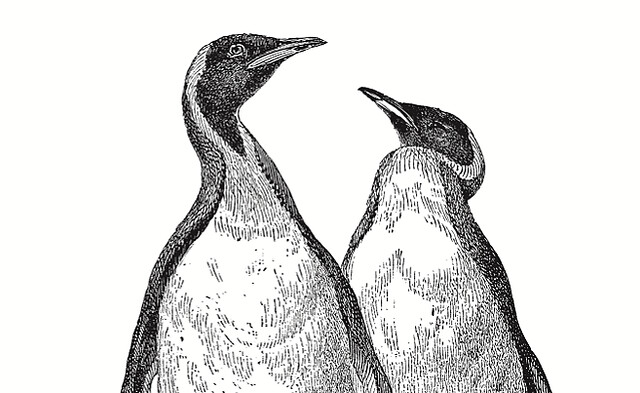The king penguin (Aptenodytes patagonicus) is the second largest species of penguin at 70 to 100 cm tall and weighs 11 to 16 kg (24 to 35 lb). In size it is second only to the emperor penguin. There are two subspecies—A. p. patagonicus and A. p. halli; patagonicus is found in the South Atlantic and halli elsewhere.
King penguins eat small fish, mainly lanternfish, and squid and rely less than most Southern Ocean predators on krill and other crustaceans. On foraging trips they repeatedly dive to over 100 metres (330 ft), and have been recorded at depths greater than 300 metres (980 ft).[2]
King penguins breed on the subantarctic islands at the northern reaches of Antarctica, South Georgia, and other temperate islands of the region.
King penguins breed on subantarctic islands between 45 and 55°S, at the northern reaches of Antarctica, as well as Tierra del Fuego, the Falkland Islands, and other temperate islands of the region. The total population is estimated to be 2.23 million pairs and is increasing.[3] The largest breeding populations are on Crozet Island, with around 455,000 pairs, 228,000 pairs on the Prince Edward Islands, 240,000–280,000 on the Kerguelen Islands and over 100,000 in the South Georgia archipelago. Macquarie Island has around 70,000 pairs. The non-breeding range is poorly known due to vagrant birds having been recorded from the Antarctic peninsula as well as South Africa, Australia and New Zealand.
The Nature Protection Society released king penguins in Gjesvær in Finnmark, and Røst in Lofoten in northern Norway in August 1936. Birds were reported in the area several times in the 1940s though none have been seen since 1949.[4]
(From Wikipedia, February 2015)




